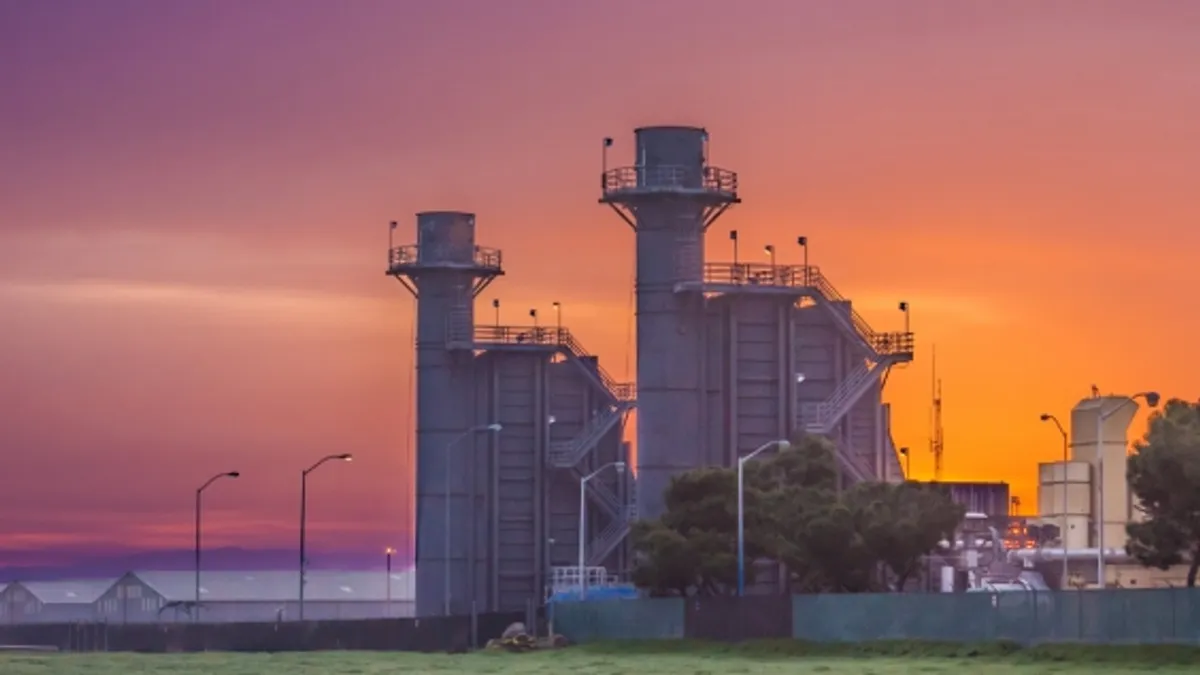Dive Brief:
-
Increased natural gas cycling brought on by higher levels of intermittent wind and solar resources on the grid are not worsening air pollution in California, according to a recent report from the Union of Concerned Scientists (UCS).
-
UCS was concerned that running gas facilities less efficiently — turning them off and on more frequently to accommodate wind and solar power — could lead to higher emissions, as full-starting plants takes more energy. But despite the shift, running gas plants less overall has still led to a net decrease in nitrogen oxide (NOx) emissions, the Oct. 9 study found.
-
Keeping an eye on gas operations will be crucial to ensuring NOx levels continue to drop, Mark Specht, UCS energy analyst and author of the study, told Utility Dive. While many plants are already cycling, the potential for larger plants to start and stop more frequently is something UCS will continue to monitor in California.
Dive Insight:
Turning gas-fired power plants on and off to address the power demands created by increased amounts of intermittent renewables is less efficient and causes some emissions spikes, but more renewables are still producing a net decline in overall air pollution in California.
Natural gas produces around 50% less carbon than coal-powered generation, and produces "negligible amounts of sulfur, mercury and particulates," according to UCS, but the fuel does emit significant levels of NOx pollutants, which contribute to smog and poor air quality.
As the largest economy in the United States and the fifth largest worldwide, California still has some of the worst air quality in the U.S., despite its aggressive renewable energy goals. Natural gas made up 36.3% of the state's electricity consumption in 2017, according to the U.S. Energy Information Administration.
This is why despite the overall decrease in NOx emissions, correlated to a broad decrease in natural gas consumption, it's still essential to keep an eye on the state's gas operations, said Specht.
Peaker plant cycling has increased in the past few years, but larger combined cycle plants have not changed their operations as dramatically, because comparatively flexible peakers are more traditionally used to complement renewables. Some modeling scenarios for a higher-renewables future see that potentially changing because combined cycle plants are more efficient than peaker plants, and therefore emit less greenhouse gas emissions overall.
This is something to watch because it's unclear how powering off and on larger plants more frequently will impact NOx pollution.
"In the grand scheme of things, it might not be a lot of NOx, but when you start up a 500 MW combined cycle plant, there'd just be more NOx coming out," said Specht.
"Part of me wonders if California's gas fleet will start operating in a way where combined cycle plants are cycling more frequently. And if that does happen, I would wonder what the NOx emissions implications would be."
The implications could be larger than just California, he said. Despite broad technological differences across state generation mixes, Specht "really would expect a similar effect where we see a net reduction in NOx emissions" from lower overall gas generation.
Concern about renewables indirectly increasing emissions was recently raised in North Carolina, when Duke Energy applied for new air pollution permits, citing more cycling because of an increase in solar power. But any increased emissions from that cycling is "greatly offset by having so much solar on the system," utility spokesperson Randy Wheeless told Utility Dive.
Overall, keeping an eye on how renewables are added and how they interact with natural gas will remain important for ensuring net emissions continue to decrease, said Specht. Meeting new demand with renewable resources rather than building out more natural gas will continue cutting NOx, especially if mass solar buildouts are able to meet demand during the day and resources like storage, wind and geothermal can reduce gas generation.
In future studies, Specht said he'd like to analyze the local impacts of NOx more, because unlike carbon, the pollutant tends to hover in the area it's produced, often in economically disadvantaged areas.
"Overall, we're heading in the right direction," he said. "But there are definitely these questions in my mind still about where are the NOx emissions going up and where are they going down? And are there equity problems with sort of locational shifts in NOx emissions?"















